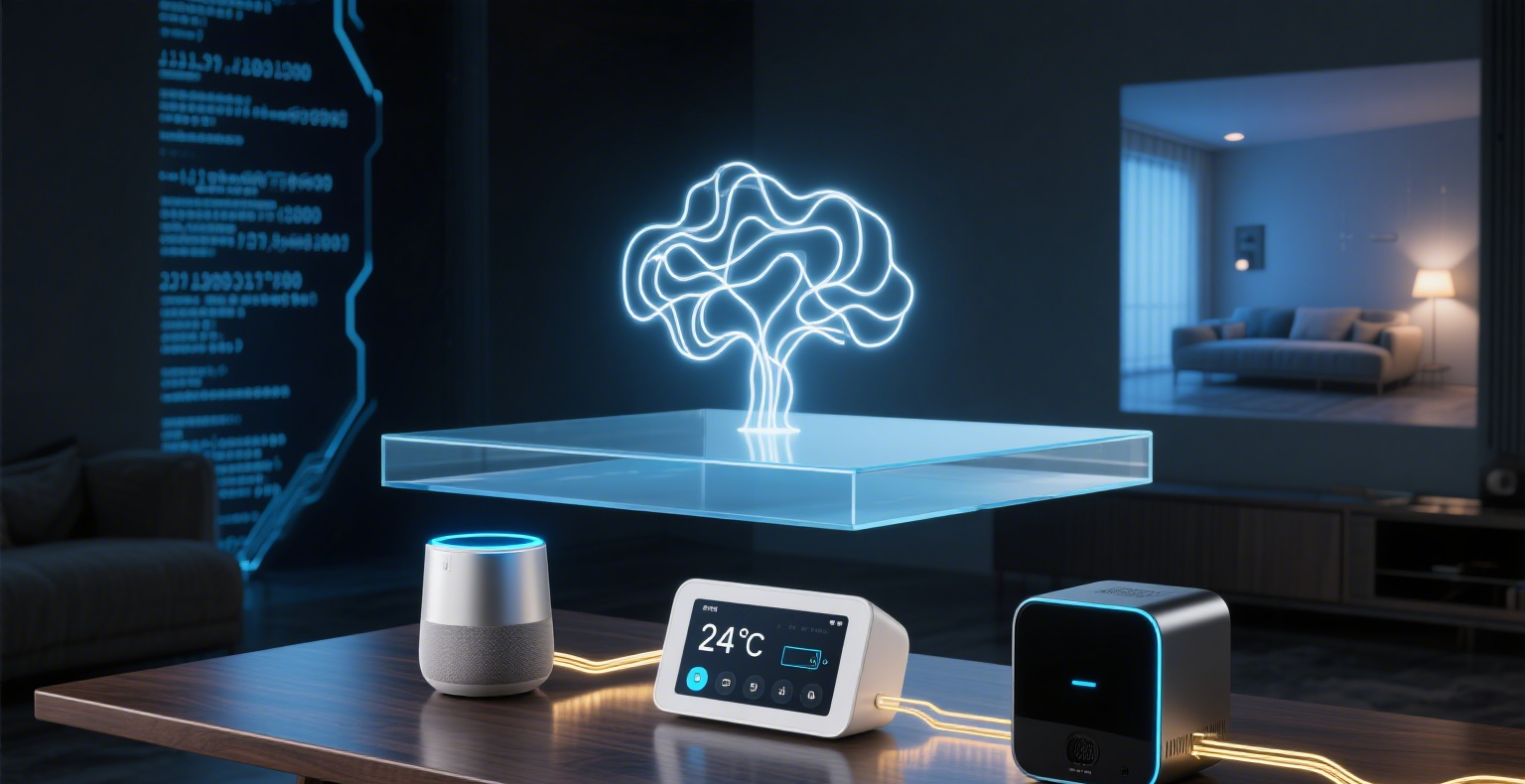Introduction
As washing machines automatically detect fabric types to optimize cycles and range hoods adjust heat to prevent boil-overs, smart homes are evolving from reactive tools to proactive decision-makers. In March 2025, Haier Smart Home partnered with the OpenAtom Foundation and HiSilicon to release an AI-Powered Smart Home OS based on OpenHarmony. By integrating NearLink technology for hyper-responsive communication and environmental sensing, this system pioneers cross-brand device interoperability and propels homes into the age of “human-machine co-governance.”
1. Technical Architecture: Three Breakthroughs
1.1 OpenHarmony + NearLink Fusion
- Unified Connectivity:
OpenHarmony enables seamless collaboration across 100+ appliance categories, eliminating protocol barriers. - Sensing-Control Integration:
NearLink delivers microsecond response times and high-precision environmental awareness (e.g., smoke density, water temperature fluctuations), enabling “sense-to-act” automation.
1.2 AI Decision Engine
| Scenario | Traditional Limits | AI OS Innovation |
|---|---|---|
| Laundry | Manual mode selection | AI detects fabric/color to auto-optimize water/energy use |
| Kitchen Safety | Requires human monitoring | Range hood senses boil-over risk and auto-adjusts heat |
| Energy Management | Fixed schedules | Learns habits to dynamically optimize AC/water heater usage |
Test Data: 18% energy savings, 95% fewer user errors
1.3 Privacy & Security
- On-Device AI Processing: Biometric data (e.g., voiceprints) processed locally—never uploaded to cloud.
- Military-Grade Encryption: NearLink provides end-to-end data protection against attacks.
2. Ecosystem Strategy: Trilateral Collaboration
2.1 Partnership Model
- OpenAtom Foundation: Drives OpenHarmony standardization for smart homes.
- HiSilicon: Supplies cost-reduced NearLink chips (40% cheaper).
- Haier: Integrates 200+ third-party devices via its smart home platform.
2.2 Developer Ecosystem
- Open-Source Modules: Releases core AI algorithms (e.g., laundry optimization) to attract 300+ partners.
- Low-Code Tools: Drag-and-drop interface slashes development time by 70%.
3. Industry Impact: Reshaping Value Chains
3.1 Ending “Ecosystem Silos”
- Cross-Brand Compatibility: Midea ACs, Gree dehumidifiers work seamlessly—boosting user retention by 35%.
- Cost Reduction: Fewer gateways cut deployment costs by 30%.
3.2 Redefining Intelligence
- Predictive Automation: System learns user behavior (e.g., wake-up time/cooking preferences) with 88% accuracy.
- Invisible Interaction: mmWave radar enables “enter-to-light, leave-to-off” scenes—physical switch usage drops 60%.
3.3 Manufacturing Revolution
- Agile Production: Haier’s Tianjin factory uses the OS for production line scheduling—order response time up 50%.
- Self-Diagnostics: 90% fault self-detection reduces repair requests by 45%.
4. Future Roadmap: Full Autonomy
4.1 2025-2026 Goals
- Device Coalitions: Washers, fridges, and ovens form “housekeeping alliances” to share resources (e.g., off-peak energy).
- Health Integration: Syncs medical data to generate chronic disease management plans (e.g., diabetic diet reminders).
4.2 Challenges
- Standard Fragmentation: Bridging Matter and OpenHarmony interoperability.
- Cost Sensitivity: Scaling AI modules below $5 for budget devices.
Conclusion: The OS as Evolution Engine
“Future homes won’t be built with devices—they’ll evolve through autonomous intelligence.”
Haier’s OS breakthrough lies in:
✅ Reimagined Interaction: Environments adapt to humans—not vice versa.
✅ New Collaboration Models: Shared risk among foundations, chipmakers, and brands.
✅ Competitive Edge Shift: Ecosystem openness replaces hardware specs as the key differentiator.
